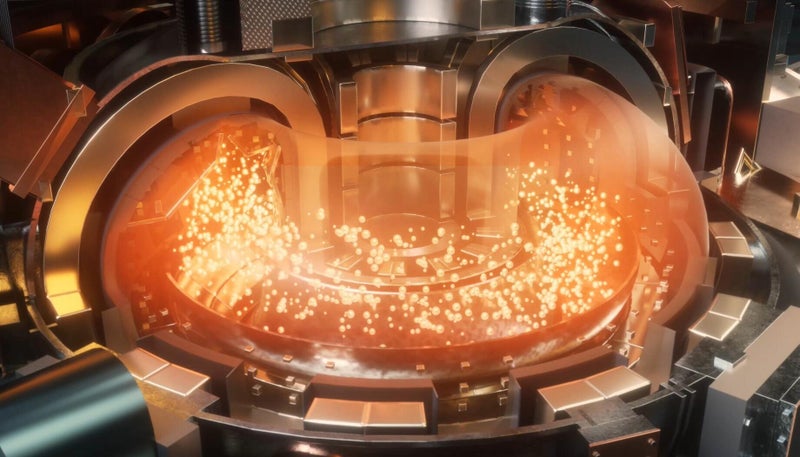Major leap towards creation of ‘Artificial Sun’ after world record 100MILLION Celsius test in unlimited energy project
Share:
SCIENTISTS have achieved a remarkable breakthrough in the pursuit of creating an "artificial sun" that could be the source of unlimited energy. Researchers hope the machine will help harness the power of nuclear fusion, which can produce sustainable clean energy by mimicking reactions that naturally occur inside the sun.

Chinese scientists constructing a nuclear fusion reactor were able to achieve a sustained plasma temperature exceeding 100 million degrees for 1,066 seconds - making a world record. It is a major leap forward to bring nuclear fusion closer to reality and create and unlimited source of energy that could burn a whopping seven times hotter than the sun.
![[Technician walking past the cryostat of the ITER nuclear fusion machine.]](https://www.thesun.co.uk/wp-content/uploads/2025/01/technician-walks-past-lower-cyclinder-782880729.jpg?strip=all&w=960)
Scientists working at the Experimental Advanced Superconducting Tokamak (EAST) facility achieved the breakthrough using a system designed to mimic the fusion reactions at the core of the sun by using hydrogen and deuterium gases as fuel. They say that viable nuclear fusion on Earth will require plasma temperatures hotter than the sun to compensate for our planet’s entry needs.

The temperature at the core of the sun is estimated to be around 15 million degrees Celsius. Song Yuntao, EAST's director, said: "To achieve self-sustaining plasma and enable fusion power plants to generate electricity continuously, a fusion device must operate highly efficiently in a stable state for thousands of seconds.".
![[A person photographs data from a control room displaying information about a fusion energy experiment.]](https://www.thesun.co.uk/wp-content/uploads/2025/01/000-seconds-considered-ke-alamy-965240302.jpg?strip=all&w=960)
However, building a reactor capable of handling nuclear fusion is still a great challenge for scientists. Zhou Haishan, a professor at Hefei Institutes of Physical Science, said: "Developing wall materials that are both resilient and resistant to damage is extremely difficult.
![[Model of the Honghuang 70 high-temperature superconducting Tokamak device.]](https://www.thesun.co.uk/wp-content/uploads/2025/01/model-honghuang-70-full-high-965533821.jpg?strip=all&w=960)





















